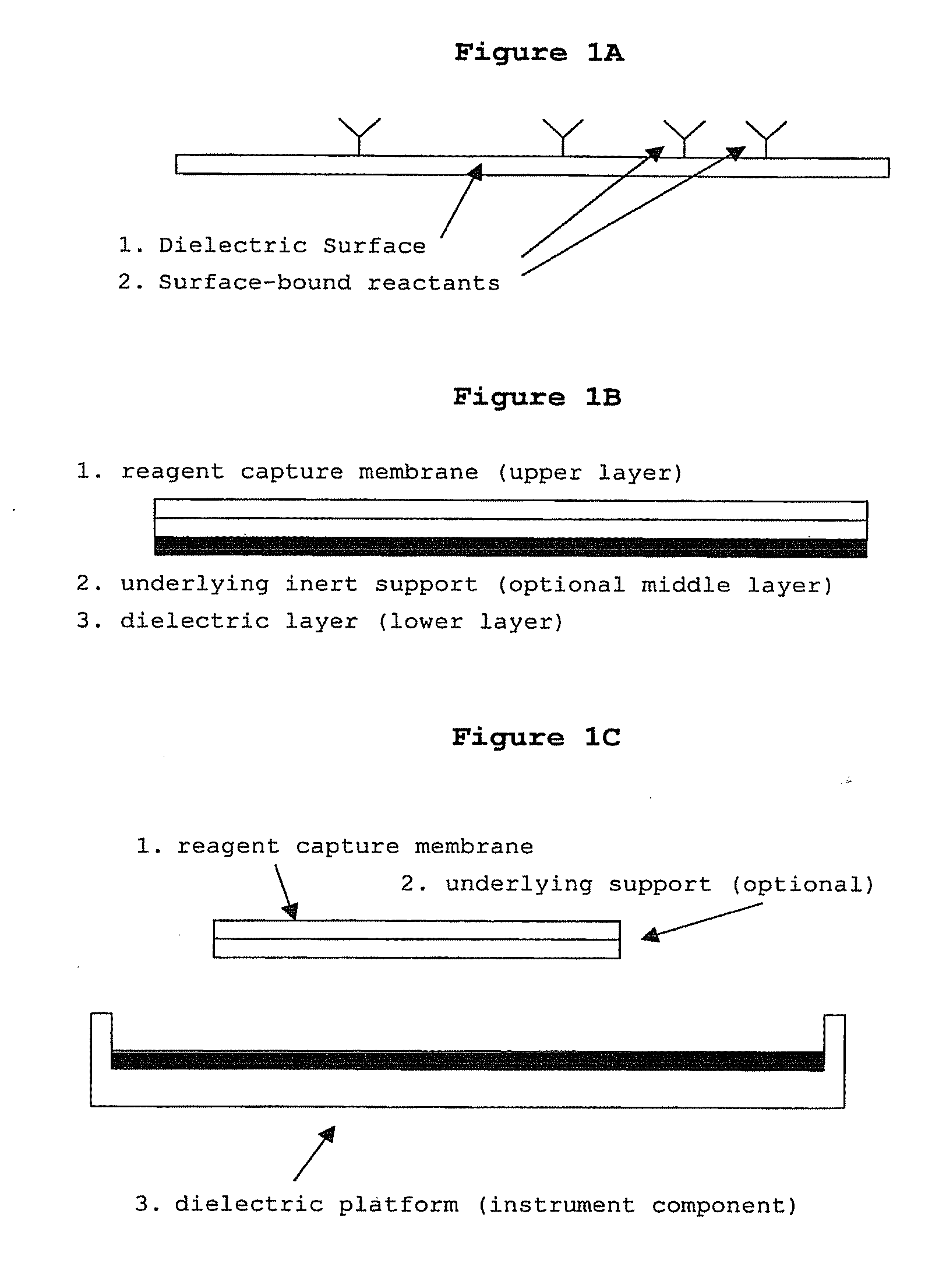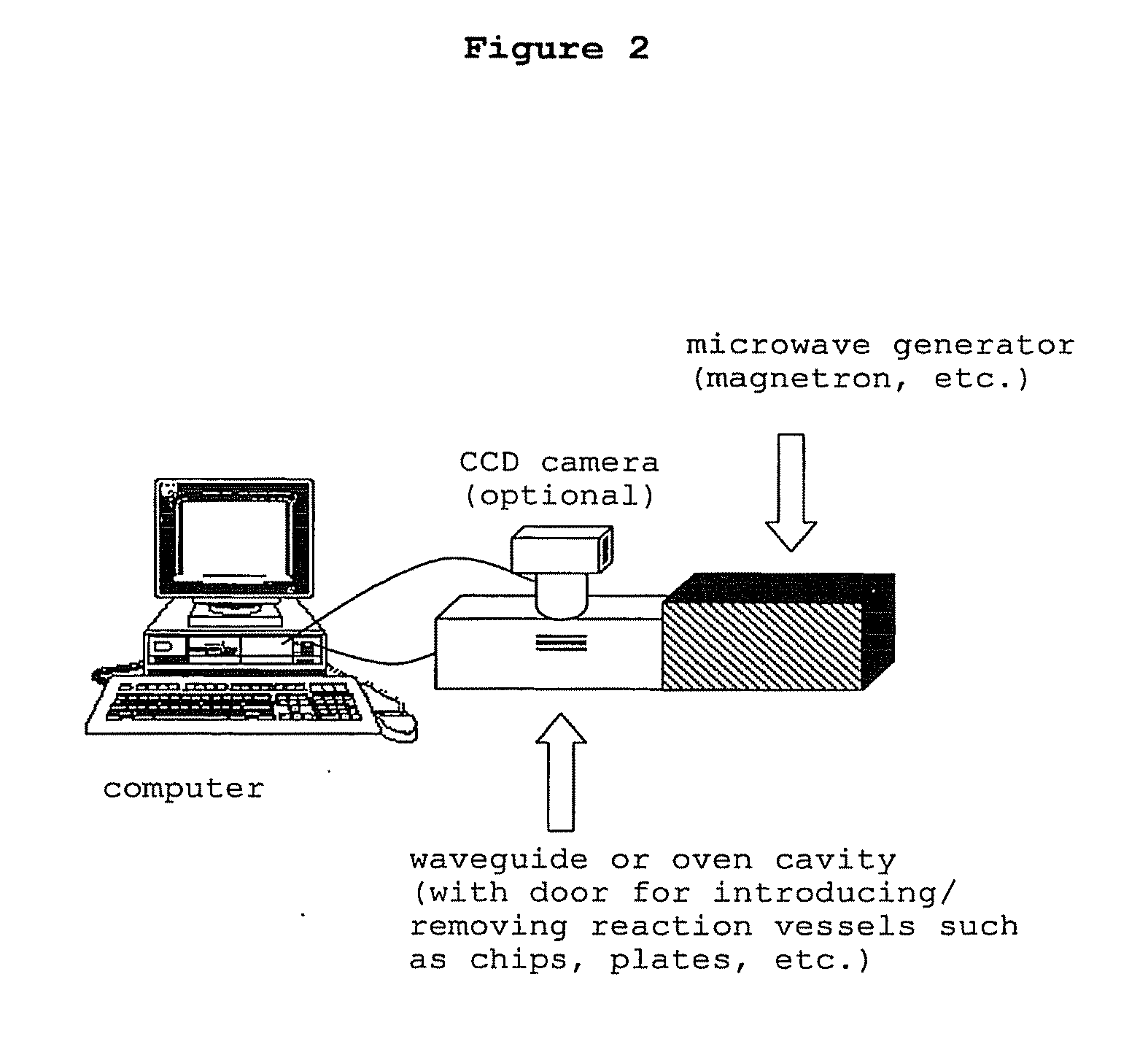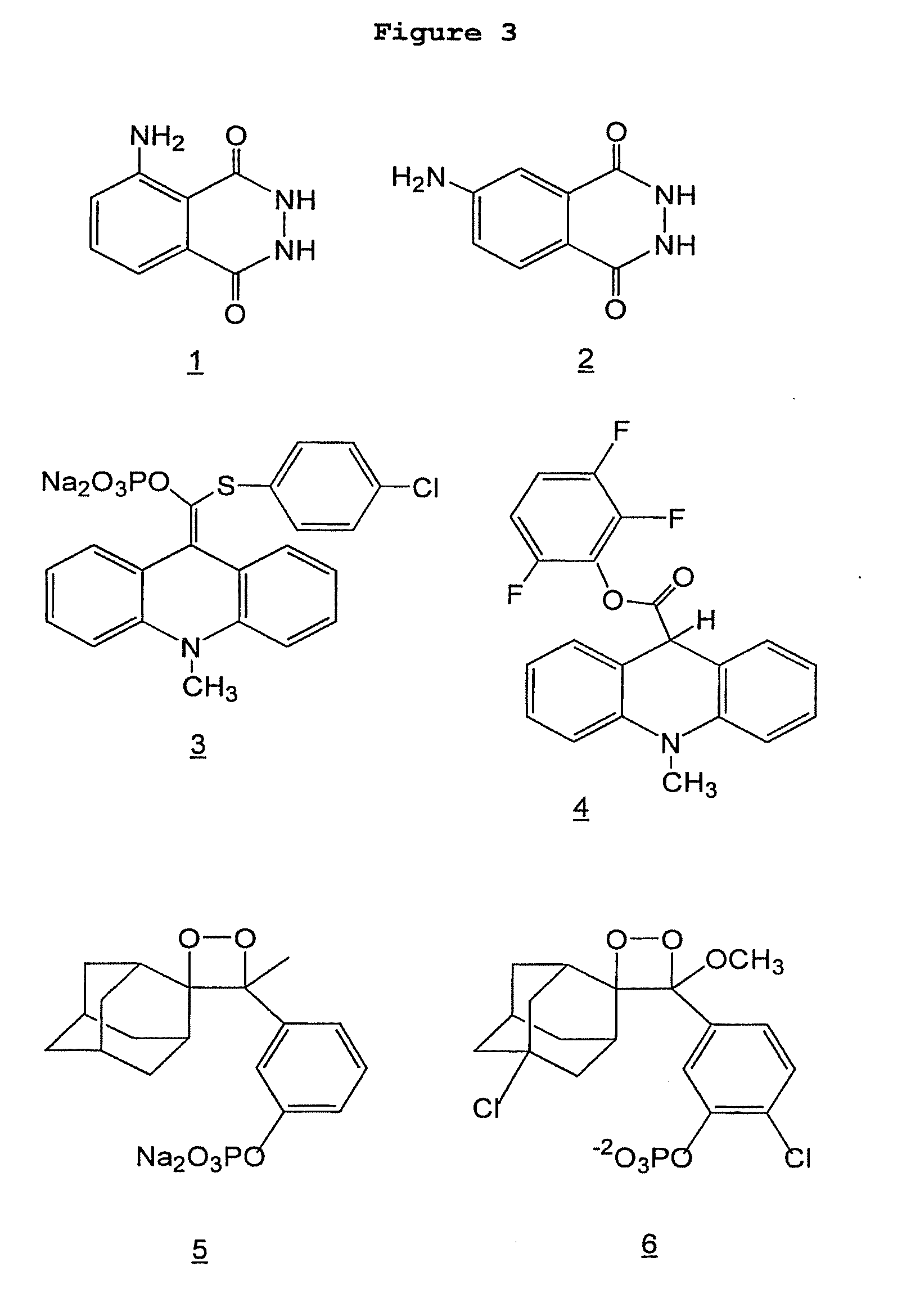Methods and compositions for directed microwave chemistry
a technology of directed microwave chemistry and composition, which is applied in the field of microwave chemistry, can solve the problems of increasing the reaction rate of reactants to form products, and achieve the effect of accelerating nucleic acid hybridization and dissociation
- Summary
- Abstract
- Description
- Claims
- Application Information
AI Technical Summary
Benefits of technology
Problems solved by technology
Method used
Image
Examples
example 1
Microwave Detection of Luminol and Isoluminol
[0208]Luminol (3-aminophthalhydrazine) and isoluminol (4-aminophthalhydrazine) (FIG. 3, compounds 1 and 2, respectively) are two chemiluminescent compounds that are commonly used in bioanalyses. Normally, they are made to emit light; through the action of an enzyme such as horseradish peroxidase (HRP), in a non-enzymatic ambient temperature chemical reaction, or through an electrochemical reaction. (Iso)luminol have not been reported to emit light upon directed microwave heating. It is not obvious that rapid microwave heating would cause (iso)luminol to emit light—rapid heating could destabilize the molecules, resulting in a breakdown by non-light-producing pathway(s). Moreover, in accordance with the principles of preferred embodiments of the invention, conditions are sought in which little or no chemiluminescent reaction occurs at room temperature, but an extremely fast reaction (approaching a “flash”) occurs under mild microwave heatin...
example 2
Microwave Detection in an Immunoassay Using Isoluminol-Labeled Antibody
[0214]Example 1 showed that small amounts of (iso)luminol (2, FIG. 3) could be detected using microwave directed chemiluminescence. An experiment was carried out to see if microwave directed chemiluminescence could be used to detect an analyte in an immunoassay. Another purpose of the experiment was to see if a direct-labeled (isoluminol) antibody could be used.
[0215]In the experiment, mouse IgG (Sigma I-5381) was used as the analyte. Mouse IgG (1 mg / mL) was spotted (3-5 nL) on a chip (FAST Slide) in S&S Array Buffer. Analyte was detected using streptavidin-isoluminol (3.5 labels per streptavidin, Sigma S-8532) that was bound to the recognition antibody, which was a biotin goat anti-mouse antibody (Sigma B-7151). Chemiluminescence of chips (BSR-1 dielectric undercoated FAST Slides) was measured on X-ray film following spraying with reagent (see Example 1) at room temperature or upon microwaving.
[0216]Detection wa...
example 3
Microwave Detection of Chemiluminescent Enzyme Substrates
[0220]Having discovered that (iso)luminol can be used in microwave chemiluminescence analyses, experiments were conducted to determine if other chemiluminescent chemistries were also amenable to microwave triggering. Chemiluminescent compounds can often be used as direct labels (attached to proteins or nucleic acids) or enzyme substrates. Streptavidin-isoluminol is an example of the former and luminol (an HRP substrate) is an example of the latter. Enzyme substrate chemiluminescent compounds have the advantage of catalytic amplification, but they also have the drawback of light emission being a sustained low glow. Chemiluminescent enzyme substrates usually follow the pathway shown below;
E+S→E+P*→E+P+hν
where E is enzyme, S is substrate, P* is a transient product, P is final product, and hν is light emission. Metastable product P* spontaneously breaks down to form P and light. Thus, if enzyme catalysis is slower than the convers...
PUM
| Property | Measurement | Unit |
|---|---|---|
| wavelength | aaaaa | aaaaa |
| frequency | aaaaa | aaaaa |
| wavelengths | aaaaa | aaaaa |
Abstract
Description
Claims
Application Information
 Login to View More
Login to View More - R&D
- Intellectual Property
- Life Sciences
- Materials
- Tech Scout
- Unparalleled Data Quality
- Higher Quality Content
- 60% Fewer Hallucinations
Browse by: Latest US Patents, China's latest patents, Technical Efficacy Thesaurus, Application Domain, Technology Topic, Popular Technical Reports.
© 2025 PatSnap. All rights reserved.Legal|Privacy policy|Modern Slavery Act Transparency Statement|Sitemap|About US| Contact US: help@patsnap.com



